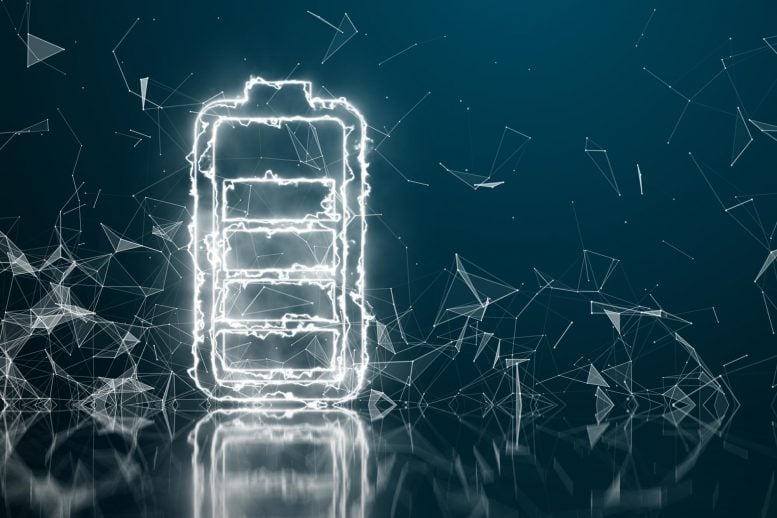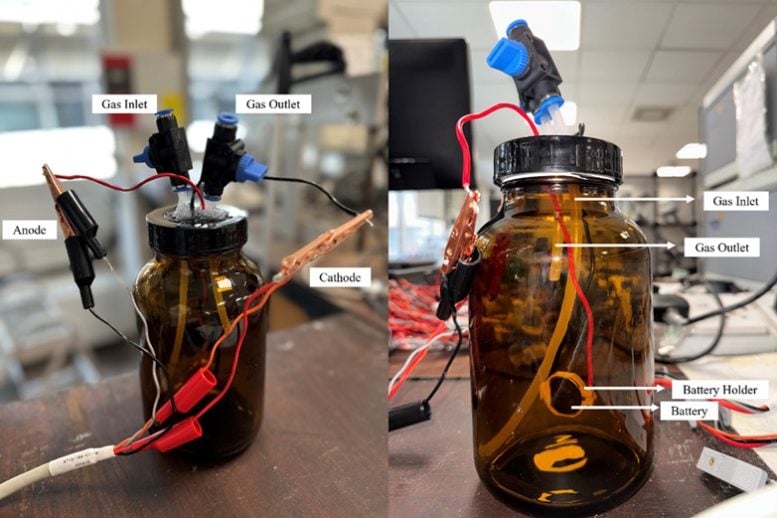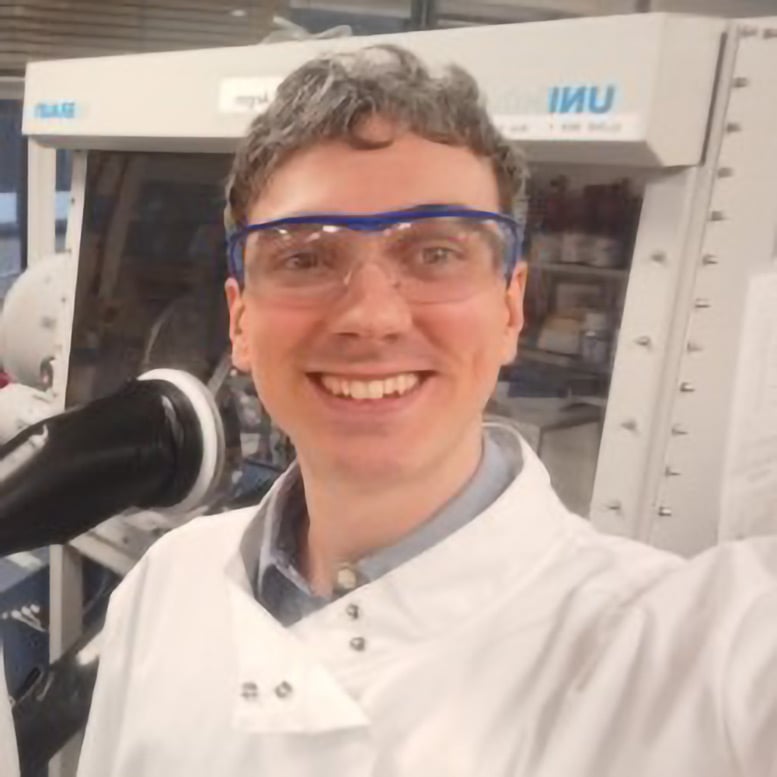
Researchers created a more efficient lithium–CO₂ battery using a simple, affordable catalyst that may help cut emissions and store clean energy.
Scientists at the University of Surrey have made a significant advance in eco-friendly battery technology, developing a system that not only stores more energy but may also help reduce greenhouse gas emissions. These lithium-CO₂ “breathing” batteries generate power while capturing carbon dioxide, offering a more sustainable option that could eventually outperform conventional lithium-ion batteries.
Previously, lithium-CO₂ batteries struggled with efficiency issues. They wore out quickly, were difficult to recharge, and depended on expensive, rare materials like platinum. Researchers at Surrey have addressed these problems by introducing a low-cost catalyst called caesium phosphomolybdate (CPM).
Through a combination of computer modelling and laboratory tests, they found that this simple change allowed the batteries to store much more energy, require significantly less power to charge, and operate reliably for more than 100 cycles.
Potential impact on emissions and space exploration
The study, published in Advanced Science, represents a promising step toward real-world use. If brought to market, these batteries could help reduce emissions from vehicles and industrial sources. Scientists also believe they could be used on <span class="glossaryLink" aria-describedby="tt" data-cmtooltip="
” data-gt-translate-attributes=”[{"attribute":"data-cmtooltip", "format":"html"}]” tabindex=”0″ role=”link”>Mars, where the atmosphere is composed of 95% carbon dioxide.

Dr. Siddharth Gadkari, Lecturer in Chemical Process Engineering at the University of Surrey, and corresponding author of the study, said:
“There’s a growing need for energy storage solutions that support our push toward renewable power while also tackling the growing threat of climate change. Our work on lithium–CO₂ batteries is a potential game-changer in making that vision a reality.

“One of the biggest challenges with these batteries is something called ‘overpotential’ – the extra energy needed to get the reaction going. You can think of it like cycling uphill before you can coast. What we’ve shown is that CPM flattens that hill, meaning the battery loses far less energy during each charge and discharge.”
Post-mortem testing reveals stable chemistry
To understand why the CPM worked so well, teams from Surrey’s School of Chemistry and Chemical Engineering and the Advanced Technology Institute used two approaches. First, they dismantled the battery after charging and discharging to study the chemical changes inside. These post-mortem tests found that lithium carbonate, the compound formed when the battery absorbs CO₂, could be reliably built up and removed – an essential feature for long-term use.

They then turned to computer modelling using density functional theory (DFT), which allows researchers to explore how the reactions unfold on the material surface. Results showed how the CPM’s stable, porous structure offered the ideal surface for key chemical reactions.
Dr. Daniel Commandeur, Future Fellow at the University of Surrey and corresponding author of the study, said:
“What’s exciting about this discovery is that it combines strong performance with simplicity. We’ve shown that it’s possible to build efficient lithium–CO₂ batteries using affordable, scalable materials – no rare metals required. Our findings also open the door to designing even better catalysts in the future.”
The discovery opens new doors for developing even better low-cost, easy-to-make battery materials. With further research into how these catalysts interact with electrodes and electrolytes, lithium–CO₂ batteries could become a practical, scalable way to store clean energy, while helping reduce carbon in the atmosphere.
Reference: “Ultralow Overpotential in Rechargeable Li–CO2 Batteries Enabled by Caesium Phosphomolybdate as an Effective Redox Catalyst” by Mahsa Masoudi, Neubi F. Xavier Jr, James Wright, Thomas M Roseveare, Steven Hinder, Vlad Stolojan, Qiong Cai, Robert C. T. Slade, Daniel Commandeur and Siddharth Gadkari, 30 April 2025, Advanced Science.
DOI: 10.1002/advs.202502553
Never miss a breakthrough: Join the SciTechDaily newsletter.
